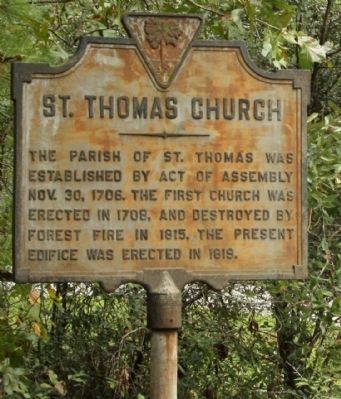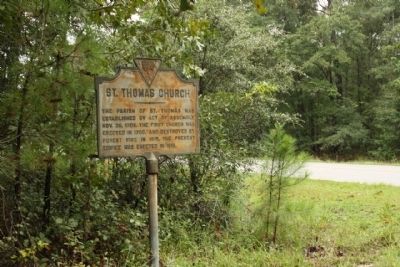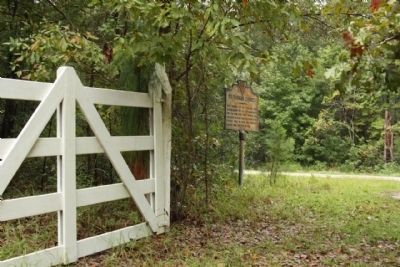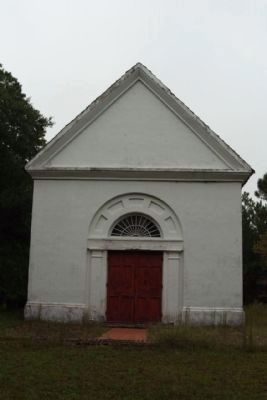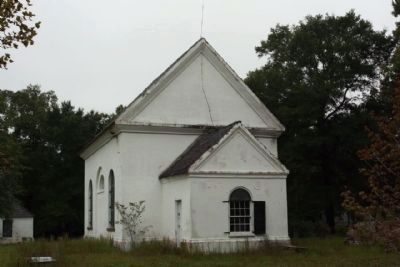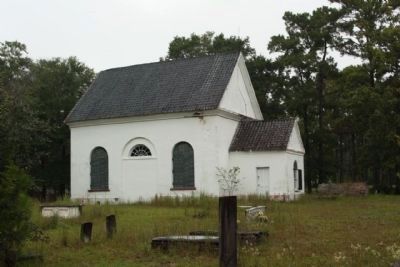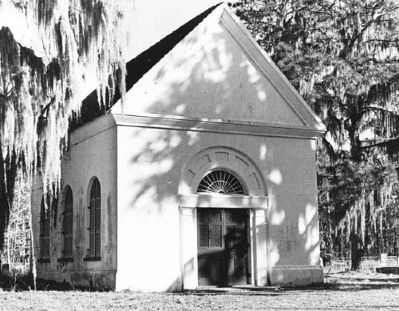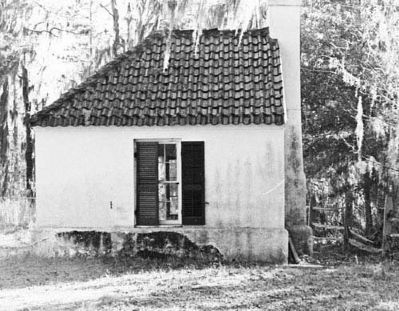Cainhoy in Berkeley County, South Carolina — The American South (South Atlantic)
St. Thomas Church
Topics. This historical marker is listed in these topic lists: Churches & Religion • Colonial Era. A significant historical date for this entry is October 30, 1820.
Location. 32° 57.66′ N, 79° 51.403′ W. Marker is in Cainhoy, South Carolina, in Berkeley County. Marker is on Cainhoy Road (State Highway 8-98). Located North of Brick Church Road. Touch for map. Marker is in this post office area: Huger SC 29450, United States of America. Touch for directions.
Other nearby markers. At least 8 other markers are within 8 miles of this marker, measured as the crow flies. Brabant Plantation (approx. 4.1 miles away); Thomas Lynch at Rivertowne (approx. 4.6 miles away); Otranto Indigo Vat (approx. 4.7 miles away); Wando Pottery (approx. 5 miles away); Point Plantation / Richmond Plantation (approx. 5.4 miles away); Phillips Community (approx. 6.1 miles away); Brickyard Plantation (approx. 7.9 miles away); Sweetgrass Baskets (approx. 8 miles away).
Regarding St. Thomas Church. (St. Thomas & St. Dennis Parish Episcopal Church; Brick Church) White Church, or St. Thomas & St. Dennis Parish Episcopal Church, was constructed in 1819 and occupies the site of the older parish church of St. Thomas, which was built about 1706 but which burned in 1815. During the Reconstruction period, the church was the scene of the 1876 “Cainhoy Massacre,” a serious riot between whites and blacks which developed when some white men from Charleston journeyed to Cainhoy to attend a Negro Republican meeting. The blacks fired upon the white men with guns they had hidden in a vault at St. Thomas churchyard.
The church, charming in its simplicity of design, is a uniquely beautiful example of a small, rural parish church of the early 1800s. The church, with its Classical Revival or late Federal features, is made of stucco over brick with a medium gable roof made of tile. A high-arched doorway with a fanlight capped by a five-panel arch is set between pilasters. The side facades are identical. A balcony above the inside door was added about 1858. In 1937 the church was restored by Henry F. Guggenheim. An unusual and distinctive auxiliary building is the vestry, with hipped roof on one end and chimney on the other, giving the appearance of a half-completed building. A cemetery dating from 1782 is included in the nomination. Listed in the National Register September 22, 1977. ( S.C. Dept. Of Archives and History )
Also see . . . Touring South Carolina's Revolutionary War Sites By Daniel W. Barefoot, page 39
. Richard Fordham grave (here) notes he served aboard frigate Randolph during the Revolution (Submitted on October 17, 2009, by Mike Stroud of Bluffton, South Carolina.)
Additional commentary.
1. Cross inside the church
I went out to St. Thomas Chapel of Ease several times in the early 1990's. The caretaker, John Slayton, was a friend and fellow member of St. Andrews Church, Mount Pleasant, SC. John made the large cross that is hanging over the altar at St. Thomas Chapel. He also made another large cross for St. Andrews and hung it in the old Sams Hall.
— Submitted June 27, 2018, by Ann Sullivan Tiller of Mount Pleasant, South Carolina.
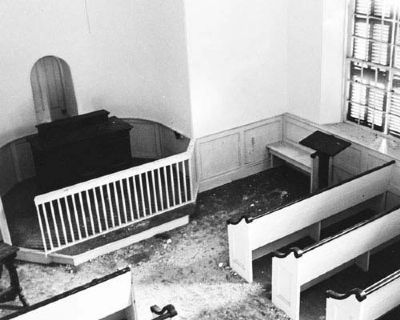
S.C. Dept. Of Archives and History, circa 1972
9. St. Thomas Church
National Register of Historical Places :
White Church (added 1972 - Building - #72001193)
Also known as The Brick Church;St. Thomas Episcopal Church
2 mi. N of Cainhoy on SR 8-98, Cainhoy
Historic Significance: Event, Architecture/Engineering
Architect, builder, or engineer: Unknown
Architectural Style: No Style Listed
Area of Significance: Religion, Politics/Government, Architecture
Period of Significance: 1800-1824
Owner: Private
Historic Function: Funerary, Religion
Historic Sub-function: Cemetery, Religious Structure
Current Function: Funerary, Religion
Current Sub-function: Cemetery, Religious Structure
Credits. This page was last revised on January 3, 2019. It was originally submitted on October 17, 2009, by Mike Stroud of Bluffton, South Carolina. This page has been viewed 4,577 times since then and 224 times this year. Photos: 1, 2, 3, 4, 5, 6, 7, 8, 9. submitted on October 17, 2009, by Mike Stroud of Bluffton, South Carolina. • Syd Whittle was the editor who published this page.
